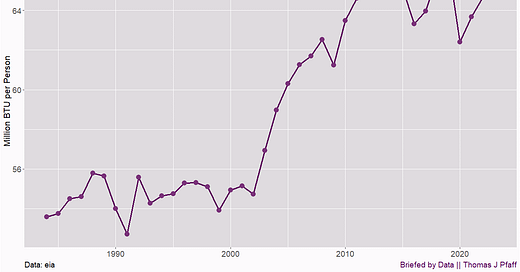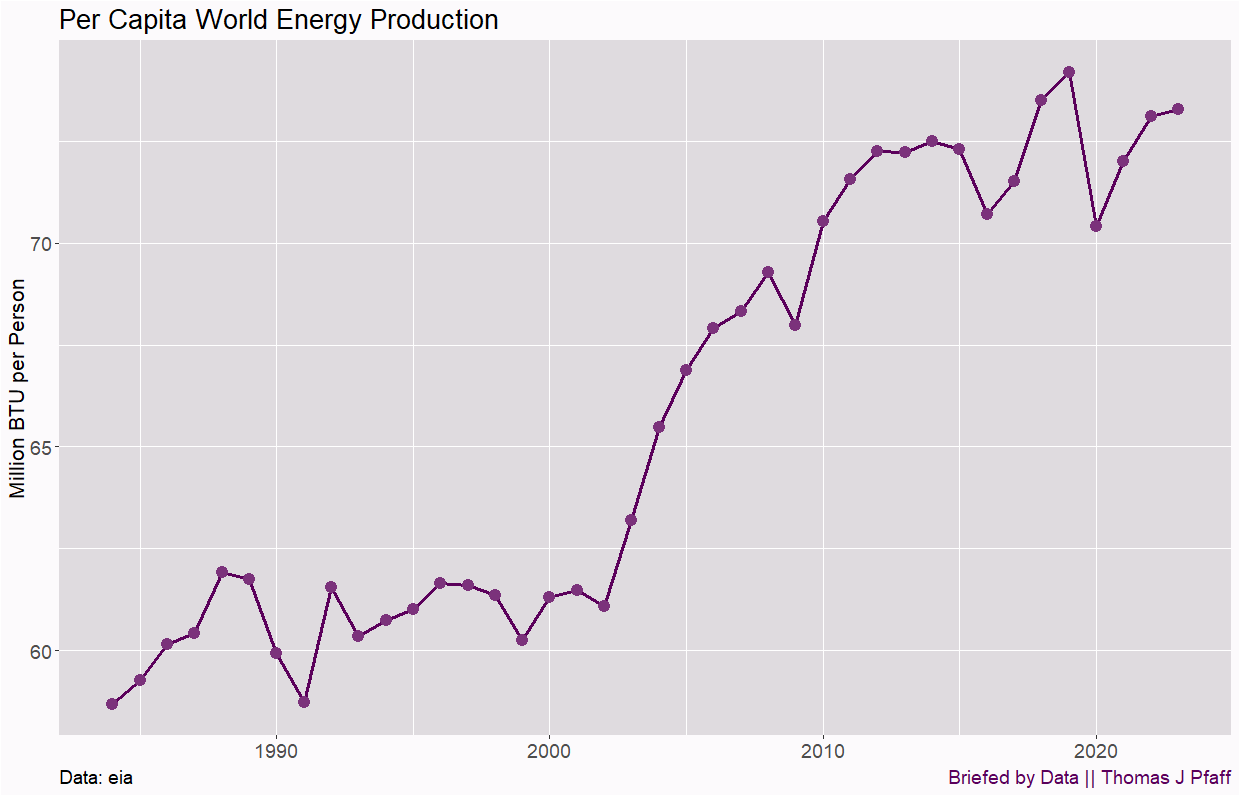I missed last Thursday due to extra work at, well, work. My day job definitely gets in the way of life at times. Glad to be back this week.
As I see it…
I'm never sure if a typical journalist is intentionally promoting an agenda or if they are simply living in such a bubble that they are unaware of their limited perspective. In the end, purposefully or not, they continue to divide. As a case study today, let’s look at the article How did childcare in the US become so absurdly expensive? (3/24/2025) from the Guardian.
As I see it, the article could have been a thought-provoking article about childcare and how to fairly support, or not, raising children. Instead, it is only about funding childcare, which today means the place you drop off your kids so you can go to work. Let me make a few points.
First, childcare, or raising children, is expensive everywhere. It has the same problem as education, health care, and numerous other industries that aren’t scalable (yet?). In other words, one person can only watch so many children, or teach so many children, or see so many patients in a day, and those few people have to pay enough to support that one worker. On the other hand, if you make a cool app, you can sell it and impact millions of people. The issue isn’t that childcare is uniquely (or absurdly) expensive in the U.S. so much as it is an issue of who pays for it. The title is “absurdly” misleading. How about Taxpayers Should Fund Childcare? That would at least be honest.
“Instead of parents paying huge childcare fees, in other wealthy nations, it’s the government that picks up the tab, …” I increasingly find statements like this dishonest. Please replace government with taxpayers. Let’s be honest about the ask in this article. The author wants taxpayers to pay for childcare so parents can go to work. I’m not actually against this; in fact, I’d go farther (see below).
Looking back, she wonders how her life would be different had childcare been more accessible when her children were young. She may have pursued the out-of-state work opportunity, propelling her career in a different direction. Additionally, she and her husband might have invested the $200,000 they estimate having spent on care over the years, paid off their mortgage or saved up to cover their children’s college tuition.
The article doesn’t talk about the fairness of taxpayer-funded childcare. Should a family where the mother (I’m using mother here to be honest, as it is most likely mom) stays home to raise children be paying taxes so another person can propel her career in a different direction? That seems a bit unfair. These people don’t exist in the author’s mind, which we see with “Others are forgoing careers entirely.” This is a one-sided article that doesn’t acknowledge that many moms, and some dads, would prefer to stay home and raise their children. By ignoring this reality, the article is divisive. Let’s fix that with this proposal.
I’m all for helping with raising children, but for each dollar of subsidy that goes to childcare, the stay-at-home parent gets the same subsidy for each child they have. Further, a stay-at-home parent gets the equivalent social security contribution of working a living wage while at home raising kids, and we put into place a veterans-like status when or if the stay-at-home parent wants to re-enter the outside-the-home workforce. I see this as a proposal worth discussing that is inclusive of different child-rearing choices, and if put in place, it would be interesting to see if more parents choose to forego a career (careers aren’t always as great as society suggests).
Related to this article is something else that should be discussed, and that is that we are a society that is increasingly self-centered. Having children is a meaningful and fulfilling choice (that isn’t for everyone), and we need to stop thinking that you should be able to have kids and give up nothing to do so.
Let’s go to some data.
Energy redux
On Tuesday I posted about energy production by source in World energy production by source. In short, we are still increasing our fossil fuel production even as renewables increase. Our per capita energy use continues to go up. This isn’t surprising, as billions of people around the world would benefit from energy use like that in the U.S. When reading the article Advanced Economies Are Being Pushed Toward Financial Collapse (3/31/2025) by Gail Tverberg (Gail the Actuary) on Our Finite World, I realized I should have included one more graph similar to one in her article. Here is world fossil fuel production per capita.
What you see is that per capita fossil fuel production is still below 2012. In fact, except for a little spike in 2019, it has been flat since 2012. I’ll repeat the total energy per capita from the post here. Notice how when we include renewables and nuclear (which have not increased), our per capita energy production is still trending up; 2023 is higher than 2012. The point here is that renewable isn’t replacing fossil fuels; it is simply being used to up the per capita energy consumption.
How hot was February 2025?
February 2025 is below that previous El Niño. It would be about what we might expect for a neutral month, but it might be an La Niña month, but we should recognize that ENSO strength varies. Below the February month is the all-months graph. At this point there is nothing particularly unusual. We have a cluster of months after the most recent El Niño group about where we’d expect them to be. Keep in mind that this does mean that the global temperature is higher, just higher about were we might expect it to be. Note: NOAA is saying the last few months are La Niña months, but I keep getting neutral when I calculate it. We agree on all other months. I’m not sure at the moment what is going on.
Here is what NOAA has to say about February 2025:
It was the fourth warmest February for the global land air temperature and the second warmest February for the global ocean surface temperature. Global temperatures have cooled in recent months as a La Niña episode, the cold phase of El Niño Southern Oscillation (ENSO) developed. Global temperatures tend to be cooler during periods of La Niña in comparison to periods with an El Niño present. According to NOAA's Climate Prediction Center's February 13 ENSO Diagnostic Discussion, La Niña conditions were present and are expected to persist in the near-term, with a transition to ENSO-neutral likely during March-May 2025 (66% chance).
Uranium production
The U.S. saw higher uranium production in 2024 than in the last six years, according to the eia (4/2/2025). Worth noting.
Pencil in hand
The LOC has a nice set of old images of people with a pencil in hand (3/27/2025). Here is one of them:

Remote work
How many people are working remotely? I was surprised by the data from the BLS (4/2/2025)
In the first quarter of 2024, 34.0 million people age 25 and older teleworked or worked at home for pay, up by 5.0 million over the year. These individuals accounted for 24.9 percent of people age 25 and older at work in the first quarter of 2024, higher than the rate of 21.5 percent recorded a year earlier. Telework rates for all educational attainment groups increased over the year.
Fertility rates
My most recent post about fertility rates was Fertility rates and population (1/28/2025). As a follow-up, the NBER reports on the working paper Babies and the Macroeconomy (paywalled 2/25) in Economic Growth, Cultural Traditions, and Declining Fertility (4/1/2025):
When nations experience rapid economic modernization, traditional family values can clash with new social realities and result in sharply declining birth rates. This insight helps to explain why some developed countries have much lower current fertility rates than others, despite having had higher rates in the recent past.
The faster drop in fertility for more rapid growth countries is interesting.
Data center update
It turns out that not all buys pan out: Microsoft cancels up to 2GW of data center projects, says TD Cowen (3/27/2025). Don’t worry though; there have been more than enough planned expansions to make up for this.
Plans filed for 1.4 million sq ft data center campus outside Atlanta, Georgia (3/27/2025)
Application filed for 8.6 million sq ft data center project outside Atlanta, Georgia (4/1/2025)
Two data center campuses totaling 38 buildings proposed in Yorkville, Illinois (3/24/2025)
The spinning CD
Please share and like
Sharing and liking posts attracts new readers and boosts algorithm performance. I appreciate everything you do to support Briefed by Data.
Comments
Please let me know if you believe I expressed something incorrectly or misinterpreted the data. I'd rather know the truth and understand the world than be correct. I welcome comments and disagreement. We should all be forced to express our opinions and change our minds, but we should also know how to respectfully disagree and move on. Send me article ideas, feedback, or other thoughts at briefedbydata@substack.com.
Bio
I am a tenured mathematics professor at Ithaca College (PhD Math: Stochastic Processes, MS Applied Statistics, MS Math, BS Math, BS Exercise Science), and I consider myself an accidental academic (opinions are my own). I'm a gardener, drummer, rower, runner, inline skater, 46er, and R user. I’ve written the textbooks “R for College Mathematics and Statistics” and “Applied Calculus with R.” I welcome any collaborations. I welcome any collaborations.












When you have rapid fall in fertility you have a generation where the dependency ratio is very low. This is the demographic dividend. This is the period you're likely to see the fastest economic growth. If you have a more modest fall in fertility the demographic dividend is more muted and more spread out.